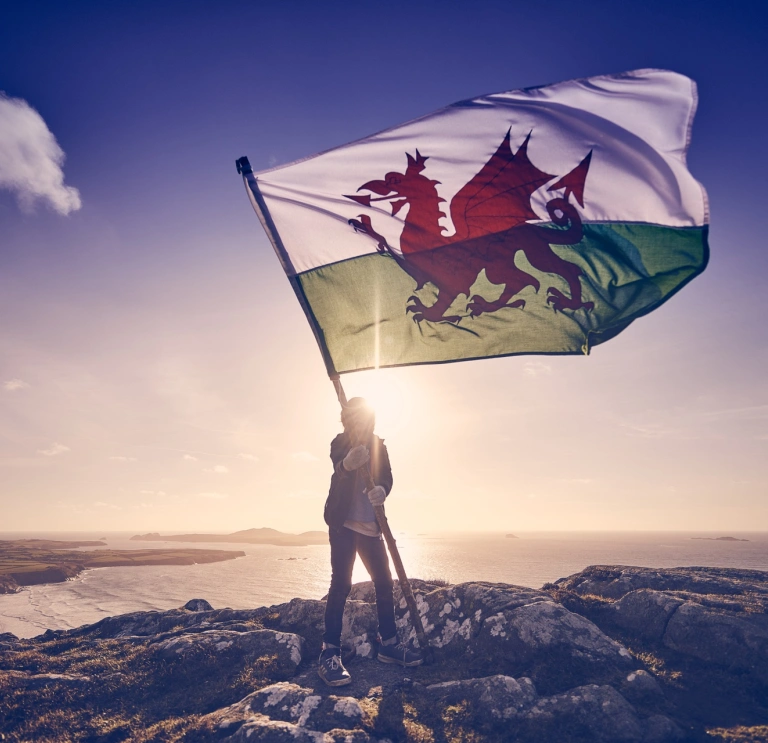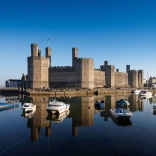Here you'll find everything you need to know about the legend of Y Ddraig Goch (the red dragon), from its mystical beginnings to its present day uses.
The story begins with a battle
As recounted in Geoffrey of Monmouth’s 12th-century text, Historia Regum Britanniae, Vortigern was a Celtic king searching for somewhere to build a castle, eventually finding a spot he liked on the hillside of Dinas Emrys. The problem was, the castle’s foundations kept falling down.
A young boy, believed to be Merlin the magician from the legend of King Arthur, told Vortigern the reason his castle would not stand is because the site was located directly above an underground lake, where two dragons lay sleeping.
Upon digging the ground, Vortigern’s men found the lake, as well as two dragons – one red, one white – who promptly woke from their long sleep and began a ferocious battle. Although the white dragon was dominant for most of the scuffle, the red dragon ultimately won the fight.

What this meant
The young Merlin told Vortigern the red dragon represented his people (native Britons) in their upcoming battles against the invading Saxon armies (who would become the Anglo-Saxons).
Over the years the red dragon has become a symbol of Wales, with various interpretations of Y Ddraig Goch (the red dragon) seen on the shirts of our national sports teams, on our food exported around the world and flying proudly in our towns and cities.
While the origin story might sound like myth and mystery, an excavation of Dinas Emrys in 1945 showed evidence of a lake and a fortress dating back to Vortigern’s time. Maybe dragons are real, after all...

The dragon and the flag
The symbol of the dragon has been used as a military standard since the time of the Romans, who themselves likely borrowed it from the Dacians (inhabitants of an ancient country in Eastern Europe).
It was later adopted by 5th-century Welsh kings, keen to show their authority following the Roman withdrawal from Britain. When Owain Glyndŵr led his feted (though ultimately ill-fated) rebellion against the English King Henry IV in 1400, he did so under a white banner adorned with a golden dragon.
It was Henry Tudor that we have to thank for the creation of the modern Welsh flag. To showcase his alleged descent from Cadwaladr ap Cadwallon (“the last king of the Britons”), he placed a red dragon on a background of white and green (the traditional Tudor colours) and presented it at St Paul’s Cathedral after his victory at Bosworth against Richard III in 1485. The Pembroke-born English king went on to reign over England for 24 years as Henry VII.
The Welsh dragon - y ddraig goch
Though the dragon faded in popularity somewhat and wasn’t featured on the Union Flag of 1606, in 1959 Queen Elizabeth II declared that ‘only the red dragon on a green and white flag should be flown on government buildings in Wales’.
Now, you see the Welsh dragon on badges, buttons, bumper stickers and painted on the faces of eager rugby fans at international matches. There really is no flag quite like it, and we think it’s one of the best.





